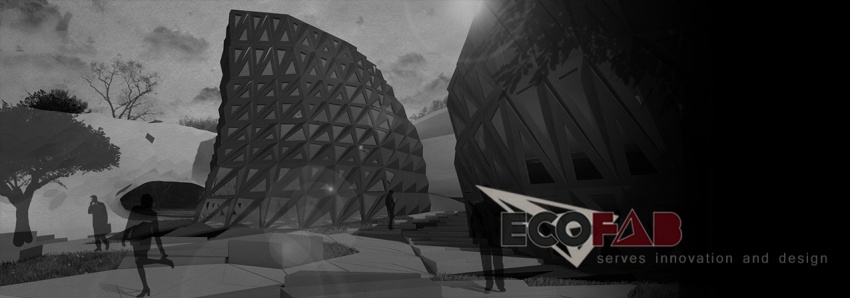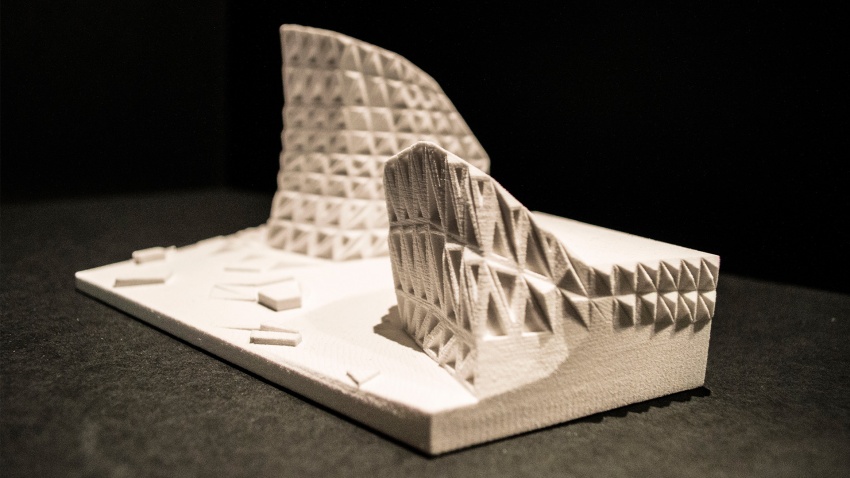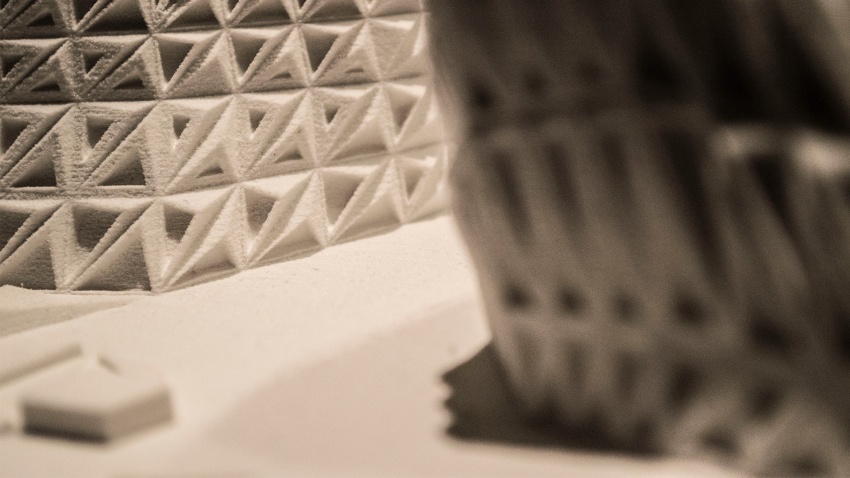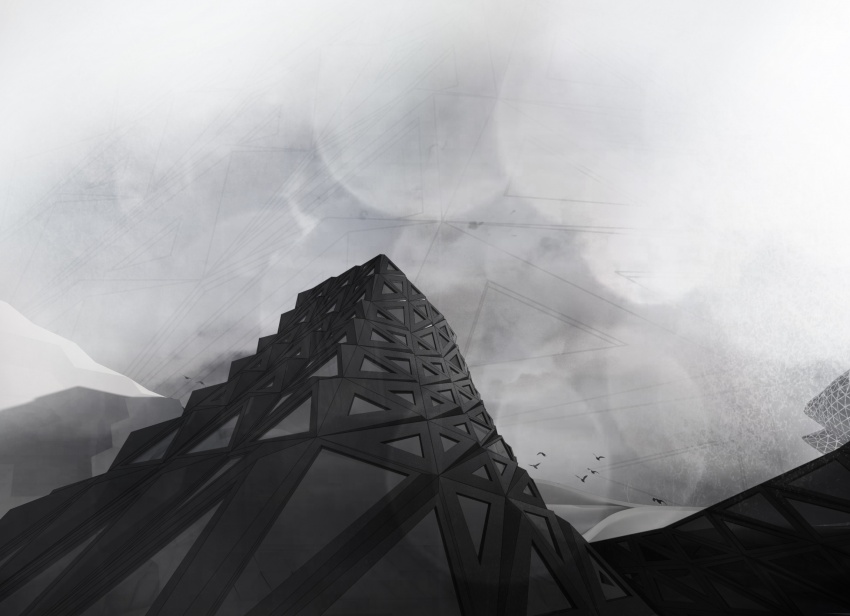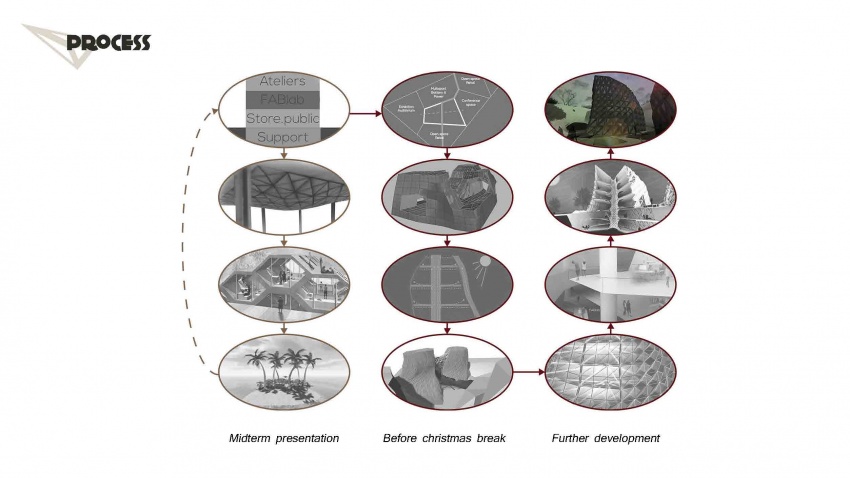project01:Frontpage
ECOfab
author(s): Matthijs Adriaan van der Lely, Milou van Min, Oana Anghelache, Rienk Klaassen, Stef Hoeijmakers
ECOfab is conveniently located between the city center of Delft and the TU campus, next to the Faculty of Architecture and the Science Center. It is situated in a place where high standard of education, driven by innovation, blends with the tradition of Dutch fine arts. Thus, the main goal of ECOfab is to insert a function that serves innovation, design and other creative arts, as well as high scientific developments. It offers also a place for people from different specializations to meet, collaborate and share ideas, serving as a think-tank for the city of Delft. ECOfab is a the connection among the neighboring plots, as well as the main, "central", public space of the entire site. The building hosts a FABlab, as well as a multitude of assembly areas and different types of working spaces (from shared to private working spaces). The social aspect of the building is addressed by integrating one storey of concept stores that creates an interior "shopping boulevard" that is also a very important connection to other buildings, as well as other spaces for meeting and socializing. The design facilitates the visual connection between spaces, creating a continuous space that encourages the exchange of ideas.
The distribution of the functions inside the building has been carefully resolved, by considering the connections between the functions and their relation to the public space, as well as taking into account the shade tolerance of each of the programs. This gave us a vertical distribution inside the building: an underground FABlab, the commercial functions in direct relation to the public space and ending with the different types of working areas. Along with three of our neighbors, we have created a large open public space in the center of the plot. Because the position of the neighbors forms a rectangle, it means that our plot is divided by its "diagonals", thus influencing the shape of our building, which has been divided into two parts. The height, function and a public route of our neighbors allowed us to unite our building to theirs, at the same time allowing for the public route to pass through our plot and continue towards the others, creating a fluent public space.
The main climatic concept that we wanted to integrate into the design in order to achieve the goal of creating an energy-neutral building is that of a climate cascade. This means that we use the natural flow of rainwater (in a climate cascade) and a solar chimney to help in the ventilation of the building and by doing this, reducing the energy consumption of the building. From the start, the integration of this climate cascade meant that the building was supposed to develop around a central core that would host the climate cascade. It also meant that we needed to carefully calculate which areas of the buildings were the most exposed to solar radiation. These two factors contributed to the final shape of the building.
The ECOfab project offers an appropriate answer to the specific problems of the site offered, as well as integrating a design concept that aims at reducing the energy consumption of the building. The initial idea of creating connections among the other buildings has been followed throughout the development of the project. The building manages to create fluent connections among the cells, as well as creating a generous public space in the center of the plot.
Model ECOfab
Parametric system
Interactive diagram in relation to: Program, Internal/External relations, Climate strategy, Form optimization.
Used to for parametric distribution of program in building context.
Software: Rhino 5, Grasshopper, Kangaroo, GECO/ECOtect, Galapagos optimization
Impression
Process Hyperbody Msc01
Products made as moments of assessment during the proces of Msc01
Interactive Body V2.0 Workshop
A n - i n t e r a c t i v e f l o o r - c e i l i n g s y s t e m
Creating a dynamic space that responds to and interacts with its occupants. The horizontal layers of floor and ceiling are transformed vertically to shape the void according to the visitors' flow and needs.
The flexible ceiling and pop-up floor elements create a dynamic and interactive environment that piques the visitors' interest and guides them along their path. </span>
MID-TERM REVIEW
